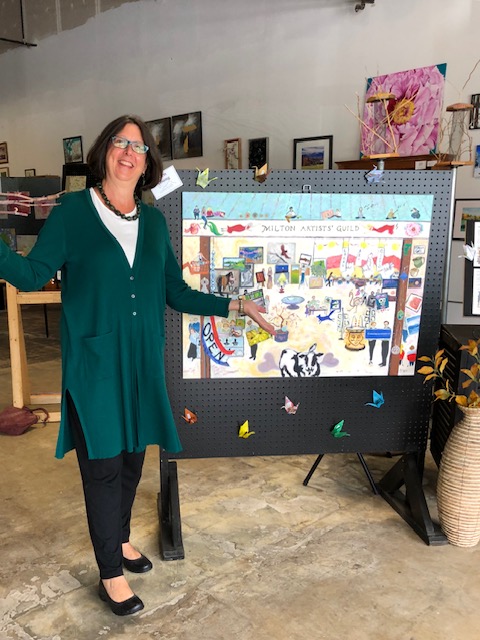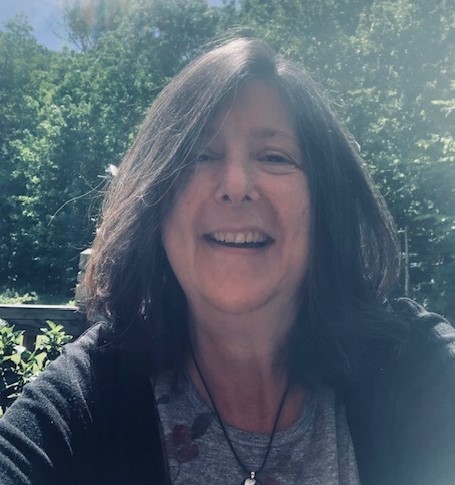We caught up with the brilliant and insightful Karen Mittelman a few weeks ago and have shared our conversation below.
Karen, appreciate you joining us today. What’s the kindest thing anyone has ever done for you?
Two unexpected kindnesses in my thirties profoundly shaped my creative journey. The first: a well-known Philadelphia poet who I admired surprised me by accepting my invitation to do a public poetry reading with me. I had been writing poetry on and off for a few years, and not taking my work very seriously. That poetry reading gave me the nudge I needed at exactly the right moment, and led me to a terrific, inspiring feminist writing group. That group sustained me and my writing through marriage, step-motherhood, and motherhood – a tumultuous and complicated time in my life.
The second: In 1993, my husband gave me a surprise birthday gift. He paid for me to attend an amazing summer writing retreat for women, Flight of the Mind. Held at a monastery on the banks of the McKenzie River in Oregon, Flight of the Mind was run from 1984 until 2000 and attracted some of the world’s leading feminist writers as teachers. For one week, I wrote, read, and listened to poetry, shared ideas and serious critiques with other participants, hiked in the mountains, and soaked in the sunlight and the sounds of the river, wild and rushing just beyond our voices.
Flight of the Mind was exhilarating and life-changing. I entered the workshop as someone longing to write, and I left thinking of myself as a writer – deeply and unalterably. I’d love to say I haven’t stopped writing since, but that’s not true. What changed was my understanding of myself and my place in the world.

Karen, love having you share your insights with us. Before we ask you more questions, maybe you can take a moment to introduce yourself to our readers who might have missed our earlier conversations?
If you asked me as a young girl the annoying question that grownups ask: “What do you want to be when you grow up?” I always said a writer. I finished my first “novel” in second grade, scrawled on looseleaf paper inside a red corduroy binder. I really, really wanted to be Harriet the Spy. But even though writing has been central to my life as long as I can remember, it has never been the focus of my career.
In fact, when I applied to the creative writing program at Brandeis University as a freshman, planning to embark on a writing career, I was rejected – and devastated. I eventually switched gears and pursued a Ph.D. in U.S. history, studying women’s social activism in the 20th century. In the years since then, I’ve changed course several times. I’ve been a museum curator and college teacher, and served for nearly two decades at the National Endowment for the Humanities (a federal cultural agency). One of my most fulfilling jobs was leading the Division of Public Programs at NEH, where my team and I supported terrific public humanities programs across the nation.
When I left the NEH I was thrilled to take on the job of executive director of the Vermont Arts Council. The COVID pandemic hit hard in Vermont’s arts community, and the Council was suddenly called upon to lead the arts and culture sector through an unprecedented crisis. I’m incredibly proud that we secured more than $9 million in state and federal aid for arts and culture organizations and raised awareness of how vital the creative sector is to community survival. Working with partners across the state, we launched the CreateVT Action Plan, a road map for investment in Vermont artists, creative entrepreneurs and businesses.
Like so many writers—and especially many women of my generation—I’ve patched together a creative life in the spaces between and around my “real jobs,” family, and other pursuits. When my son was in elementary school, I taught a poetry course at his summer camp. I devoted several years to designing and trying to launch the first public charter school in our southern Maryland community. More recently, with one of my dearest friends, I spent three crazy months planning and running a pop-up Thanksgiving pie business. (We baked more than 200 pies in four days!)
I’ve published poetry and several personal essays, and self-published my first novel, Gone Bolshevik, in 2016. I am currently at work on a memoir about growing up the daughter of a feminist in the 1970s. After that, who knows?
How can we best help foster a strong, supportive environment for artists and creatives?
One of the many things I learned from supporting the Vermont arts community through the COVID pandemic is that a vibrant creative sector is critical to our future.
A growing body of research nationwide demonstrates the power of the creative economy as a catalyst for growth and change. Studies of communities in crisis also tell us that the arts, culture, and creativity are wellsprings of inspiration and hope in times of recovery, fostering healthy and resilient communities.
Communities flourish when the arts are flourishing. We must think about the arts and creative enterprises as critical infrastructure, just as fundamental as roads, bridges, housing, and broadband. Investment in cultural infrastructure might take many forms, such as: tax credits for arts and culture districts; skills training and mentorships for creative entrepreneurs; accessible, affordable studio space and performance venues; involving artists in town planning and urban design; grants for art that re-envisions public spaces; and schools that foster innovation and nurture the creative skills of the next generation of entrepreneurs, dreamers and thinkers.
I’ve visited so many places where artists and creative businesses are the heartbeat of their communities, where theaters, bustling arts centers, libraries, sculpture gardens and makerspaces anchor civic life. And I know from my experience in Vermont that when we support and empower artists and creatives, they will help us all to imagine our shared future together.

Is there a particular goal or mission driving your creative journey?
There is a wonderful quote by the choreographer Martha Graham to her friend and sister choreographer Agnes de Mille. Martha Graham says, “There is a vitality, a life force, an energy, a quickening that is translated through you into action, and because there is only one of you in all of time, this expression is unique. And if you block it, it will never exist through any other medium and it will be lost. The world will not have it. It is not your business to determine how good it is nor how valuable nor how it compares with other expressions. It is your business to keep it yours clearly and directly, to keep the channel open.”
I have those words typed on a sheet of paper that sits at my desk, and I re-read them whenever I feel discouraged or lost or dissatisfied with my work. At this stage of my writing life, at age 65+, Martha Graham’s advice captures my mission for my own creative work. I want to keep on telling my story, as clearly and authentically as I am able, for as long as I am able. My goal is simply to keep the channel open.
Contact Info:
- Other: https://thepenngazette.com/transplant/
https://karenmittelman.medium.com/
https://www.vermontartscouncil.org/vermont-creative-network/action-plan/


